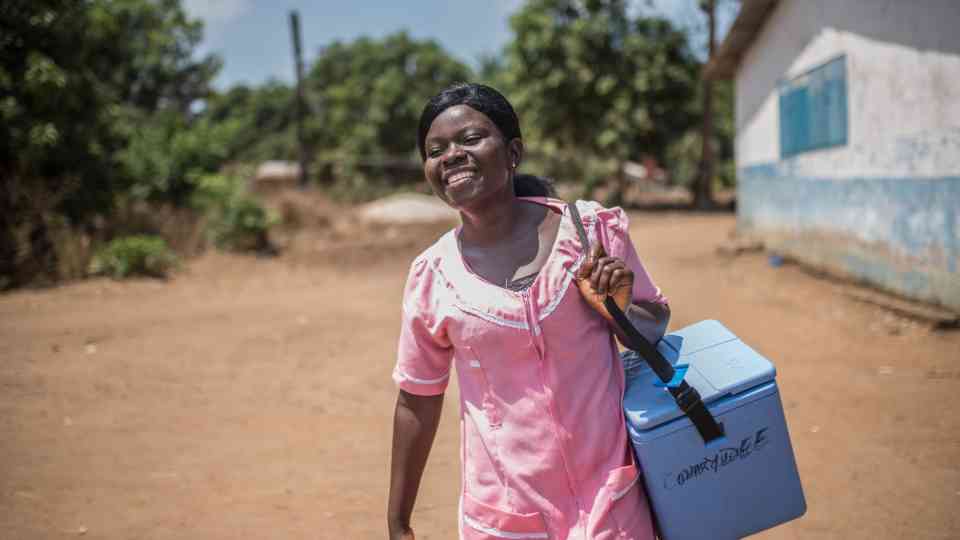The United Nations Office for Project Services (UNOPS)
Lights switched on for the first time across rural Sierra Leone
Sierra Leone’s President Julius Maada Bio officially commissioned the turning-on of lights in 54 rural communities across the country this week, as a part of the Rural Renewable Energy Project (RREP).
“This project will help support small-scale enterprises by stimulating economic activities and will also help agricultural activities,” said President Bio.
“We will replicate and promote this RREP model and extend energy access to more Sierra Leoneans,” he added.
Implemented by UNOPS on behalf of the Ministry of Energy, with funding from the UK Department for International Development (DFID), the £34 million project aims to significantly increase the country’s electrification rate, particularly in rural areas.
The RREP uses solar energy technology to provide up to 4 megawatts of sustainable, low-carbon energy to rural communities. A first of its kind in Sierra Leone and in sub-Saharan Africa, the project will benefit more than 360,000 residents, as well as local businesses and essential services.
Starting in 2017, the first phase of the project saw the installation of solar-power plants in 54 community health centres, of which 50 mini-grids were expanded to provide electricity to thousands of households, schools and businesses.
“Mini-grids not only take advantage of Sierra Leone’s solar potential, they also offer a reliable, sustainable and affordable solution for people in rural communities, who until now, have depended on disposable batteries, car batteries, generators, kerosene and candles to light their homes,” said Nick Gardner, UNOPS Country Manager in Sierra Leone.
“We are excited about the many positive impacts that renewable energy will bring to these rural communities – including economic development, better access to health services and education, empowerment of women and a reduction of greenhouse gas emissions,” he added.
The second phase of the project widens access to electricity to community health centres, houses, schools and businesses to a further 44 communities. Essential infrastructure – including electricity cables and poles – are currently being installed, with electrification expected to be completed in 2020.











